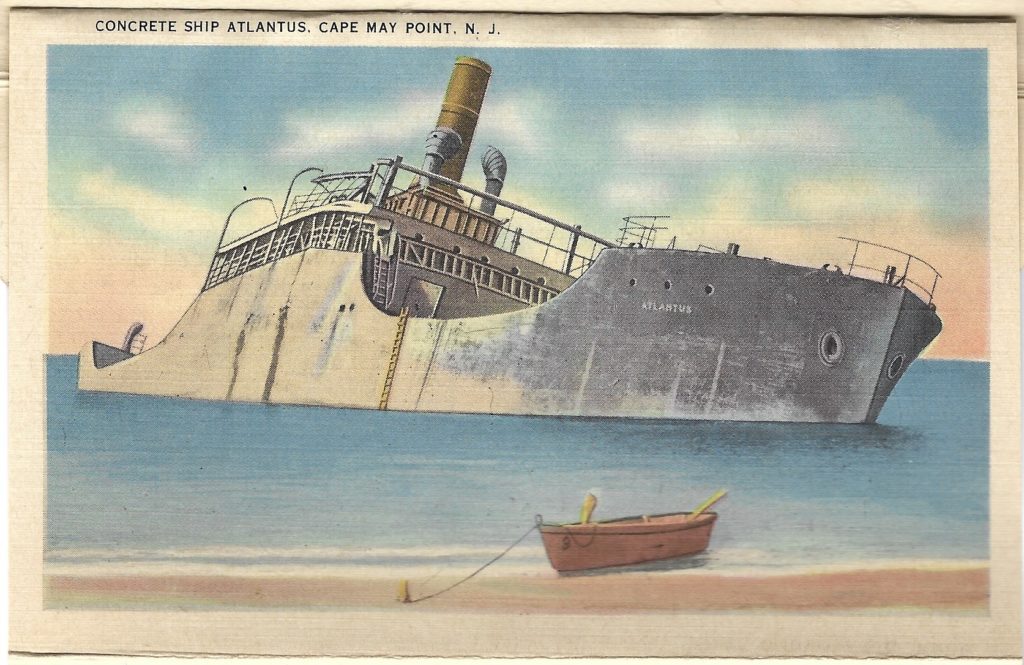We know that vessels of wood, fiberglass, steel, and even papyrus can float. But concrete? Seems implausible, but it happened.
vintage postcard, concrete ship “Atlantus,” Cape May Point, NJ, built 1918, sank 1926
The Concrete Ship – “S. S. Atlantus”
Cape May Point, New Jersey
by Harlan B. Radford, Jr.

The remains of the concrete ship now situated at the foot of Sunset Boulevard in Cape May, NJ was one of an experimental lot of 12 freighter ships built by the United States Government during World War I. The rather unlikely concrete construction technique was brought on by the critical wartime shortage of steel.
Launched in 1918, not only did the “Atlantus” float, she was used as a coal steamer until being decommissioned since the concrete vessel proved a disappointment by her sheer weight and slow speed.
Later, promoters purchased the “Atlantus” for use as a ferry landing for a proposed route from Cape May Point to Lewes, Delaware. But one night a nor’easter broke it from its mooring and beached it before proper placement could occur.
Attempts were made to raise the ship and re-position it but to no avail. Consequently, the proposed ferry project did not materialize. Over many years, millions of visitors have traveled to see her sink deeper and deeper into the sand. Eventually, the “Atlantus” will disappear entirely and be just a distant memory.


Just to say, the history written about S.S. Atlantus is often fictional. I’m sur that you will agree that she did not cross the Atlantic and she certainly wasn’t;t used to pick up US troops after World War I https://thecretefleet.com/blog/f/myth-buster-blog—ss-atlantus-the-legend-and-her-urban-myth